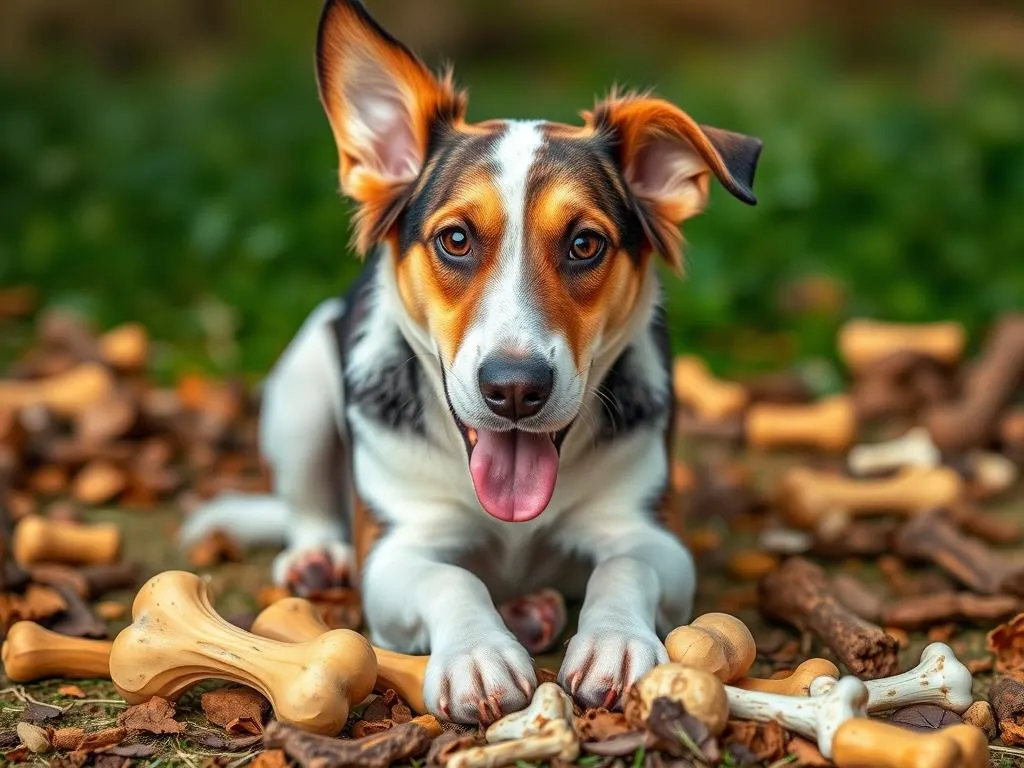
Maintaining proper dog nutrition is crucial for the health and well-being of our furry friends. Among various dietary components, bones hold a special place in a dog’s diet. They not only provide essential nutrients but also serve as an excellent source of mental stimulation and dental health. This article will explore what kinds of bones can dogs eat, focusing on safe options while also addressing the risks involved.
Understanding Dog Nutrition
The Basics of Dog Nutrition
A balanced diet for dogs consists of essential nutrients, including proteins, fats, carbohydrates, vitamins, and minerals. These components work together to support various bodily functions, including energy production, immune response, and overall growth and development.
- Proteins are vital for muscle development and repair.
- Fats provide energy and support skin and coat health.
- Carbohydrates supply energy and aid in digestion.
- Vitamins and minerals play critical roles in metabolic processes and bone health.
Understanding the basic nutritional needs of dogs is the first step in ensuring they lead healthy lives.
The Role of Bones in a Dog’s Diet
Bones can be an excellent source of nutrition, particularly when they are raw. They contain significant amounts of calcium and phosphorus, which are essential for strong bones and teeth. Additionally, chewing on bones can provide mental stimulation and help keep a dog’s teeth clean, reducing plaque build-up.
However, it’s important to know what kinds of bones can dogs eat safely to avoid potential hazards.
Types of Bones for Dogs
Raw Bones vs. Cooked Bones
The type of bone you choose for your dog can significantly impact their health. Raw bones are generally safer than cooked bones, which can splinter and cause choking or internal injuries. Raw bones retain their moisture and are less likely to splinter, making them a better option for your dog’s chewing pleasure.
Cooked bones, on the other hand, can become brittle and may break into sharp pieces that can injure your dog’s mouth, throat, or digestive tract. Always opt for raw bones to enhance safety.
Safe Types of Bones for Dogs
Raw Bones
If you’re considering incorporating bones into your dog’s diet, here are some safe raw bones to consider:
- Beef Marrow Bones: Rich in nutrients and fat, marrow bones provide an excellent source of energy.
- Chicken Necks: Soft and easy to chew, chicken necks are great for smaller breeds.
- Lamb Shanks: A good source of minerals, lamb shanks are suitable for larger dogs.
These raw bones offer several benefits, including satisfying your dog’s natural chewing instincts and promoting dental health.
Recreational Bones
Recreational bones are large bones that dogs can chew for extended periods without the risk of swallowing them whole. Examples include:
- Large Beef Bones: These provide a satisfying chew and can help keep your dog occupied.
- Knuckle Bones: Dense and robust, knuckle bones can withstand heavy chewing.
These bones can promote dental health by reducing plaque and tartar build-up.
Bones to Avoid
Not all bones are safe for dogs. Here’s a list of bones to avoid:
- Poultry Bones: Chicken and turkey bones can splinter easily, posing a choking hazard.
- Pork Bones: These can splinter and may cause digestive issues.
- Small Bones: Bones that are small enough to be swallowed whole can pose a choking risk.
Understanding which bones to avoid is crucial to ensuring your dog remains healthy and safe while enjoying their chewing experience.
How to Introduce Bones into Your Dog’s Diet
Starting Slowly
When introducing bones into your dog’s diet, it’s essential to start slowly. Begin with small, raw bones and observe how your dog reacts. Some signs to watch for include:
- Difficulty chewing
- Signs of distress
- Changes in stool
If your dog shows any adverse reactions, it may be best to remove the bone and consult a veterinarian.
Monitoring and Supervision
Always supervise your dog while they chew on bones. This ensures you can intervene if they struggle or if the bone starts to splinter. If your dog exhibits signs of discomfort, such as whining or excessive drooling, it’s crucial to take the bone away immediately.
Alternatives to Bones
Chew Toys
If you’re concerned about the safety of bones, consider using chew toys as an alternative. Many toys are designed specifically for dogs and can provide similar benefits to chewing on bones.
- Rubber Chew Toys: Durable and safe, these can withstand heavy chewing.
- Dental Chews: These are specifically designed to promote dental health and can be an effective alternative.
Chew toys not only help maintain oral hygiene but also provide mental stimulation and keep your dog entertained.
Dental Treats
Dental treats can also play a significant role in maintaining your dog’s oral health. These treats are formulated to help reduce plaque and tartar build-up while also providing a tasty snack.
- Greenies: These are popular dental treats that many dogs enjoy.
- Whimzees: These come in various shapes and sizes, making them fun for your dog to chew.
Incorporating dental treats into your dog’s routine can complement their diet and support overall health.
Common Myths About Bones in Dog Nutrition
Myth: All Bones Are Safe for Dogs
One of the most common misconceptions is that all bones are safe for dogs. This is far from the truth. While some bones can be beneficial, others can pose significant risks. It’s essential for dog owners to educate themselves about bone safety and understand what kinds of bones can dogs eat without endangering their health.
Myth: Bones Will Break a Dog’s Teeth
Another myth is that bones inevitably lead to broken teeth. While it’s true that some bones can be too hard and cause dental damage, selecting the right type of bone can minimize these risks. Raw bones, particularly those that are appropriately sized for your dog, are generally safe and can even help maintain dental health.
Conclusion
In summary, incorporating bones into your dog’s diet can offer several nutritional benefits, but it’s vital to choose the right types of bones and introduce them safely. Understanding the differences between raw and cooked bones, identifying safe options, and knowing which bones to avoid are all crucial steps in ensuring your dog’s health.
As always, consulting with a veterinarian for personalized advice regarding dog nutrition is recommended. This will help you make informed decisions for your dog’s dietary needs and ensure their continued health and happiness.









